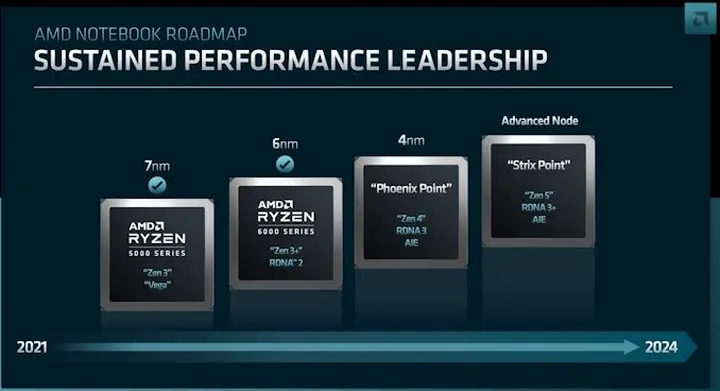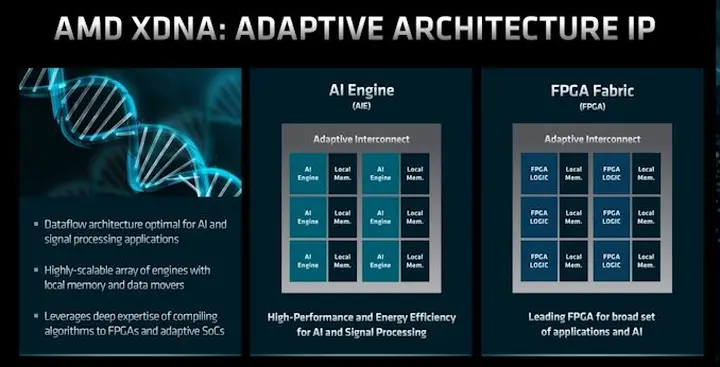On the financial analyst day (FAD) event day, amd updated its product roadmap including desktop, server, graphics and mobile* In AMD's latest notebook roadmap *, the company has determined that it will announce the mobile Zen 4 kernel (Pheonix point) before the end of 2023, while the mobile Zen 5 without a designated node is expected to appear before the end of 2024.

The updated amd notebook roadmap shows that by 2024, two mobile processors have been highlighted, the ryzen 5000 Series Based on Zen 3, equipped with Vega integrated graphics card, and the latest ryzen 6000 based on Zen 3+, equipped with the latest rDNA 2 mobile graphics card function. But more will be announced in 2023.
In the updated amd notebook roadmap, the successor of Rembrandt (ryzen 6000) will be launched soon, and AMD will code it Pheonix point. Amd Phenoix point will be based on AMD's upcoming Zen 4 core architecture and will be manufactured using TSMC's 4-nanometer process nodes.

According to the roadmap, AMD's Zen 4 Pheonix point mobile processor will use the artificial intelligence engine (AIE) and AMD's upcoming next generation rDNA 3 integrated graphics card. At present, it is not clear whether the platform will support ddr5 or DDR4 memory, but we see that the ryzen 7000 (Zen 4) uses the same core architecture and will only target ddr5. Pheonix point will use ddr5 memory.
The AMD notebook roadmap also released a platform based on Zen 5, which uses an unspecified manufacturing process, code named Strix point. Although there are few details about Strix point, amd does say that Strix point will use the unpublished rDNA 3+ graphics technology of AMD. This may be an updated rDNA 3 variant, and the performance per watt may be higher.

The roadmap slides for Pheonix point and Strix point also list the artificial intelligence engine (AIE), which is more common in mobile phones. The AI engine or AIE will allow AMD to standardize its products based on tiles with adaptive interconnections. However, it has not disclosed more information about how it intends to include AIE in its notebook portfolio. We know that it is part of AMD xDNA adaptive architecture IP, which comes from its acquisition of Xilinx.